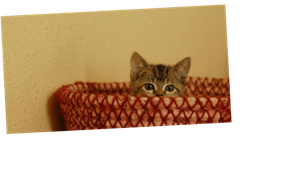Your cat really is trying to tell you something – but you’re probably clueless about the message it’s trying to put across.
Scientists have revealed that felines have facial expressions just like our own, but few humans can understand them.
More than 6,000 people from 85 countries took part in a study in which they were asked to watch cat videos and then judge the animal’s moods.
Even though the majority were cat-owners themselves, participants were only correct 60% of the time.
Not everyone did quite as badly, however, because 13% of people turned out to be ‘cat whisperers’ who correctly guessed how the animals were feline (sorry) more than 75% of the time.
‘Cats have a reputation for inscrutability. But our new research shows that cats in positive and negative emotional states can be told apart from just subtle facial expressions,’ the academics wrote.
‘Our findings indicate that cats, like humans, have different facial expressions when in different emotional states (including positive ones).
‘They also suggest that people can be trained to read these: important because that could help strengthen the bond between owners and cats, and improve cat care and welfare.’
‘So, our next job is now to formally characterize these subtle feline facial expressions.’
Three-quarters of participants were women, who scored better than men.
Young people also did better than old folk, whilst vets and other professionals also performed well.
Participants were asked to watch videos and decide whether each cat was ‘in a positive state, a negative one, or if they weren’t sure’.
The researchers added: ‘That women generally scored better than men is consistent with past research showing that women are good at decoding non-verbal displays of emotion.
‘As for the cat-reading skills of veterinary staff, they often deal with dozens of cats a year and need to be well tuned in to the subtle signals of happy or unhappy animals so as to identify pain and sickness, and also to avoid being bitten or scratched.’
You can take the test yourself by following this link.
Source: Read Full Article

